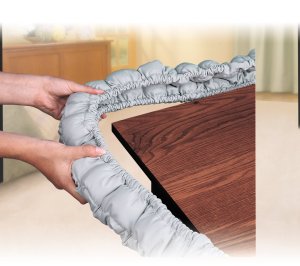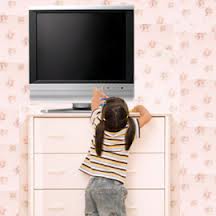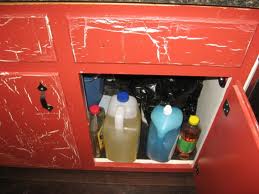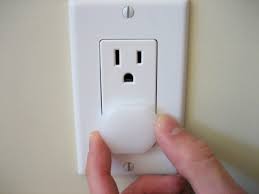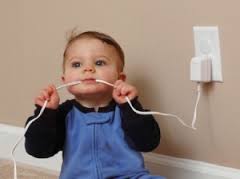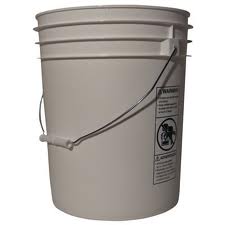To reduce the risk of injury in other areas in and outside of your home:
Use furniture bumpers: Cover sharp furniture and fireplace corners with corner or edge bumpers, just in case your child falls. These aren’t necessarily pretty, but it is better than the alternative. Consider moving items with sharp edges out of high-traffic areas while your child is learning to walk.
Secure Furniture: Furniture, such as TV’s, can tip over and crush a young child. Injuries typically occur when a child tries to climb onto, fall against or uses the furniture to stand up. Be sure to anchor TV stands, shelves, bookcases, dressers, desks, chests and ranges to the floor or attach them to a wall. Free-standing stoves or ranges can be installed with anti-tip devices. Move floor lamps behind other furniture.
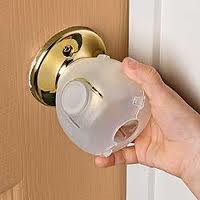
Use door knob covers, locks and stops: Door knob covers and door locks can help prevent your child from entering a room where he or she might encounter hazards. Look for a door knob cover that’s sturdy but can be used easily by adults, in case of an emergency. Make sure any locks you use on a door can be unlocked from the outside. Consider temporarily removing swinging doors and folding doors or keep your child away from them.
Keep hazardous objects out of reach: Common household items that may pose a choking hazard include safety pins, coins, pen or marker caps, buttons, small batteries, baby powder and bottle tops. Always safely store all potentially poisonous substances in a high, locked cabinet. Always keep products in the original containers, which might contain important safety information. Don’t allow your baby to play with plastic bags or to play on waterbeds. Consider placing your trash can in a locked cabinet or getting a childproof lock for it, in case you throw out potentially hazardous items.
Address outlets and electrical cords: Place plastic plugs that don’t pose a choking hazard in electrical outlets, or cover them with plates. Keep electrical cords and wires out of the way so children don’t chew on them or grab them.
Keep cords out of reach: Keep telephone, computer and window-blind cords tied up and inaccessible–especially near your baby’s crib. Safety tassels and inner cord stops for window blinds and draperies can help prevent strangulation. When buying new window coverings, be sure to ask about safety features.
Watch out for liquid containers: keep your child away from fish tanks and coolers. Empty buckets and other containers immediately after use. Don’t leave them outside, where they may accumulate water.
Avoid certain houseplants: some plants can be hazardous to children. Contact your regional poison control center for information and advice.
 Safely store firearms: if possible, don’t keep firearms in your home or in an area where your child plays. If you do keep firearms in your home, keep the unloaded gun and ammunition in separate cabinets.
Safely store firearms: if possible, don’t keep firearms in your home or in an area where your child plays. If you do keep firearms in your home, keep the unloaded gun and ammunition in separate cabinets.
reference: Mayo Clinic Guide to your Baby’s First Year

